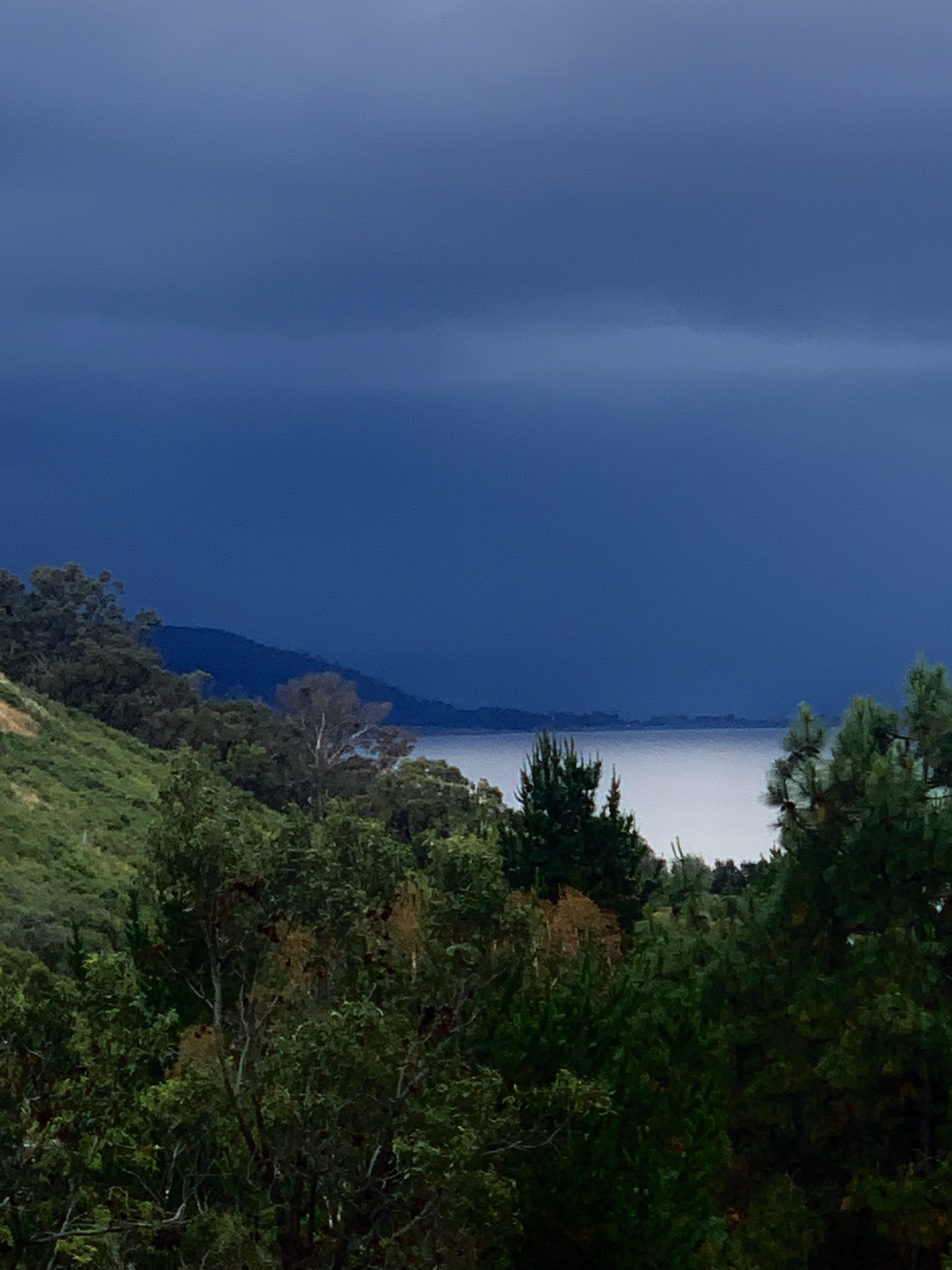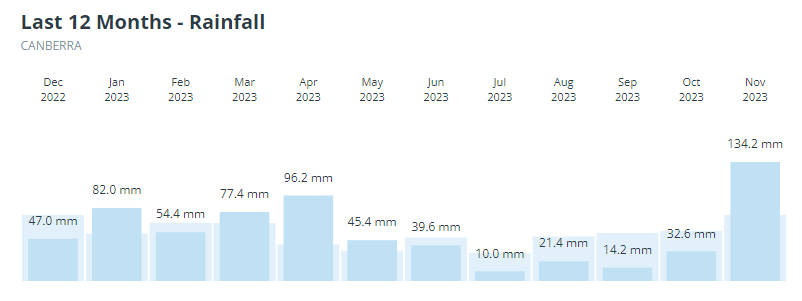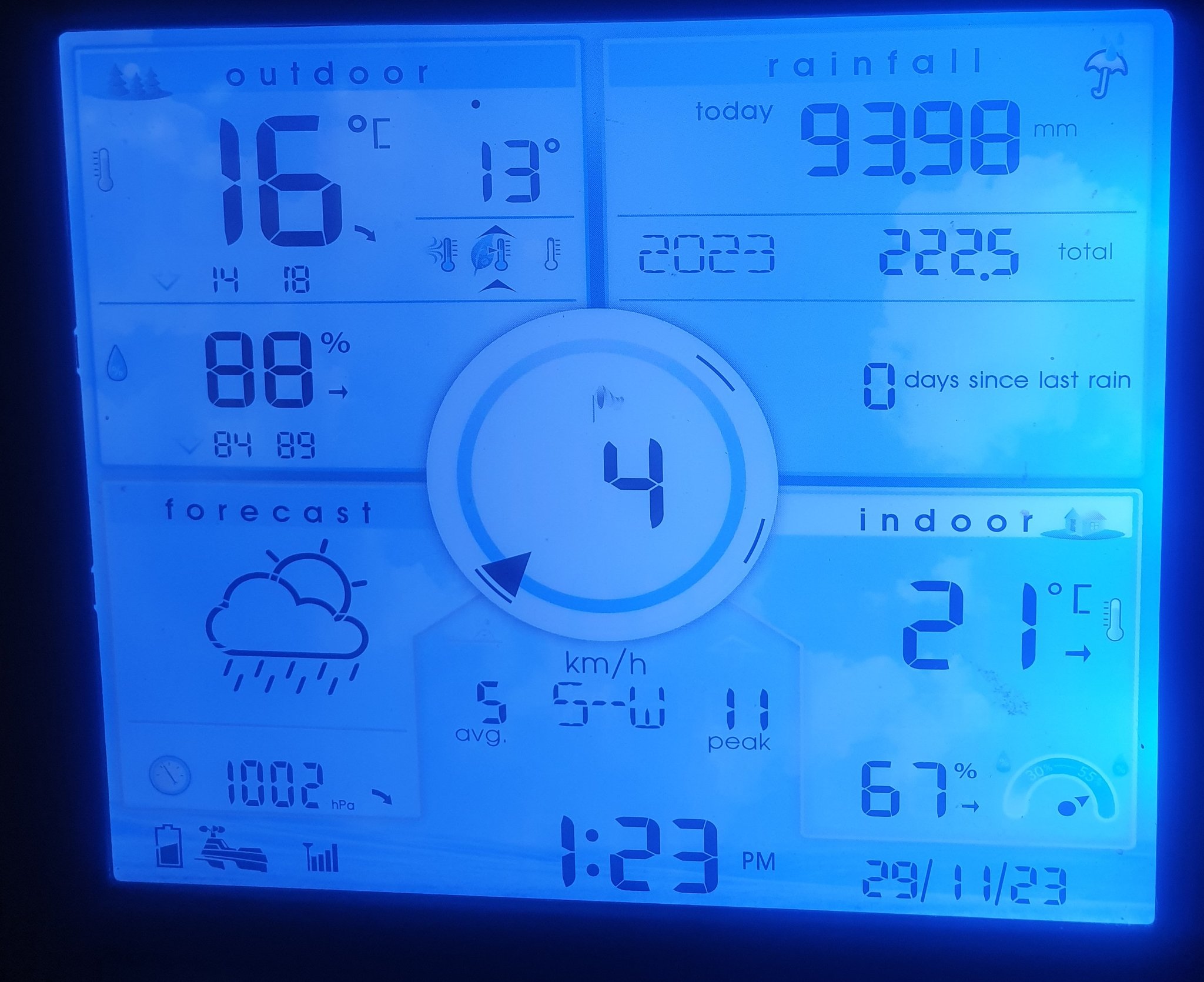A November to remember for Canberra
The national capital is up to 134.2 mm of rainfall for November 2023, and indeed that will now be the official monthly total, as any rain that falls this Thursday will fall in the 24-hour total to 9 am Friday December 1, which means it counts as December rainfall.
In a city that prides itself on its parks and gardens, and where residents can gauge the state of the countryside merely by driving between suburbs, few locals will need reminding that this month's rain was very welcome indeed.
November 2023 in Canberra was:
- The first calendar month of 2023 with 100 mm or more of rainfall
- The first month with 100 mm or more since November 2022, when 100.2 mm fell
- Close to double the monthly average of 74.1mm
November is actually Canberra's wettest month on average, and recent years have well and truly lived up to that.

Image: Lake George looking moody this week from Weerewa lookout as yet another storm approaches. Source: Tim the Yowie Man.
Over 100 mm fell in 2023, 2022, and 2021, while 2020 came close to triple figures with 93 mm. (The 2021 total of 152.6 mm was the city's November record.)
Where the current very wet November differs from recent soggy Novembers is that Canberra had been extremely dry in the months leading up to November 2023.
As you can see on the graph below, winter was dry in the capital. For the record, it was also an exceptionally warm winter. https://www.weatherzone.com.au/news/canberra-forgot-to-have-winter-in-2023/1478775

Canberra is now up to 607.4 mm of rainfall for the year to date, which means 2023 should come close to the city’s annual average of 640.4 mm.
A city of microclimates
It's worth noting that Canberra's official weather stats are taken at the weather station at the airport. Because Canberra is a large, spread-out city with a range of different topography, totals can vary greatly between suburbs.
Sometimes, drizzle and showers will drift in from the coast (which is about 100 km away as the crow flies even if it's nearly 170 km by road) and leave the western suburbs dry.
In winter, cold weather from the west will flick the southern and western suburbs with rain or even snow showers while the north and east of the city hardly see a drop.
Weatherzone spoke on Wednesday to Canberra resident "Liz", who shared an image of her personal weather station at her home in Belconnen, in northwest Canberra.

Image: Siri, what does "soggy" look like in statistical terms? Source: Canberra resident "Liz".
It's unclear exactly what the word "today" means in the top right corner alongside the reading of almost 94 mm of rain, so we can't draw a hard scientific conclusion from the above.
But we can say that Canberra Airport in the city's east received 44.8 mm in the 24 hours to Wednesday morning and 24 mm to Thursday morning.
So Liz's home weather station is indicative of the fact that Canberra's northwestern suburbs did better from this event than Canberra’s official weather station at the airport.
The bottom line is that the whole ACT was just one of many forecast districts across southern and eastern Australia that got a thoroughly good soaking this week.